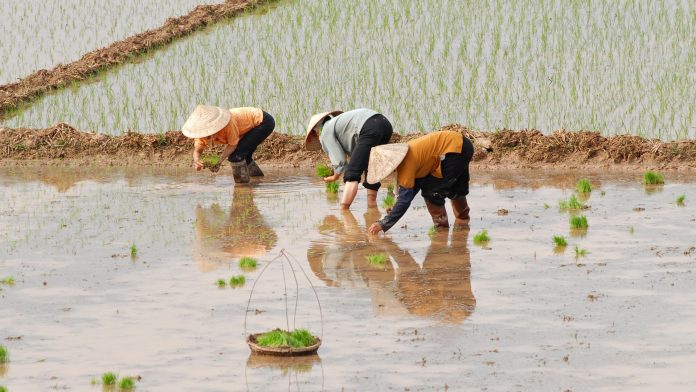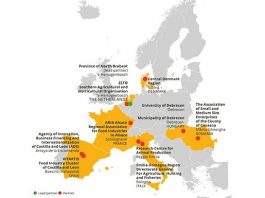Researchers at the Institute of Environmental Biotechnology have demonstrated how a specific bacterium inside the seeds of rice plants effectively inhibits destructive plant pathogens.
The cultivation of rice plants is very water-intensive and, according to the German aid organisation Welthungerhilfe, around 15% of rice is grown in areas with a high risk of drought. Global warming is therefore becoming increasingly problematic for rice cultivation, leading to smaller harvests and hunger crises. Crop failures caused by plant pathogens further aggravate the situation.
The breeding of pathogen resistant plants is the only alternative to pesticides. However, If the plants are resistant to one pathogen thanks to their breeding, they are usually more susceptible to other pathogens or are less robust under adverse environmental conditions.
An international research group which includes the Institute of Environmental Biotechnology at Graz University of Technology has been studying the microbiome of rice plant seeds to establish correlations between plant health and the occurrence of certain microorganisms. They identified a bacterium inside the seed that can lead to complete resistance to a particular pathogen and is naturally transmitted from one plant generation to another.
The findings published in the scientific journal Nature Plants provide a completely new basis for designing biological plant protection products and additionally reducing harmful biotoxins produced by plant pathogens.
Rice microbiome
In conventional rice farms in the Chinese province of Zhejiang, it was observed that one genotype of rice plants sometimes develops resistance to the plant pathogen Burkholderia plantarii. This pathogen leads to crop failures and also produces a biotoxin that can cause organ damage and tumours in persistently exposed humans and animals.
The group of researchers has also investigated the microbiome of rice seeds from different cultivation regions in detail in the context of a collaboration with Zhejiang University (Hangzhou) and Nanjing Agricultural University in China as well as with the Japanese Hokkaido University in Sapporo.
The scientists found that the resistant plants have a different bacterial composition inside the seeds than the disease-susceptible plants. The bacterial genus Sphingomonas was found significantly more often in resistant seeds. The researchers therefore isolated bacteria of this genus from the seeds and identified the bacterium Sphingomonas melonis as the responsible agent for disease resistance. This bacterium produces an organic acid (anthranilic acid), which inhibits the pathogen and thereby renders it harmless.
Tomislav Cernava from the Institute of Environmental Biotechnology at Graz University of Technology said: “This also works when the isolated Sphingomonas melonis is applied to non-resistant rice plants. This automatically makes them resistant to the plant pathogen Burkholderia plantarii. The potential of this finding is enormous. In the future, we will be able to use this strategy to reduce pesticides in agriculture and at the same time achieve good crop yields.”









